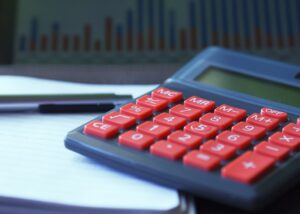Learning to calculate a property’s cash flow makes it a vital requirement in buying real estate properties. That way, you’ll discover whether your investment can generate enough passive income or not.
Investing in rental properties without having an idea of how to calculate the property’s cash flow is a mistake many investors make. If you intend to build wealth through your real estate investments, it’d be best to learn how to calculate your rental property’s cash flow.
As such, a rental property calculator helps you calculate your cash flow speedily without using a spreadsheet manually.
We’ve outlined everything you need to know about tracking your rental cash flow using a rental calculator income. Let’s dig in!
Tracking Your Rental’s Cash Flow
It’d be best to break the process into three categories to understand how to track your rental’s cash flow. The three sections include:
-
Cash Flow After Financing
One reason to calculate a property’s cash flow after financing is that it ensures you have enough money to pay for your mortgage. Thus, consider using a cash flow calculator rental to discover the amount to pay each month and then deduct the cash flow figure from the expenses.
-
Cash Flow From Operations
Through a rental calculator, you can quickly determine your NOI, including day-to-day expenses like:
- Property taxes
- Property maintenance costs
- Property insurance
- Vacancy costs in percentage
- Rental permit costs
- Management costs in percentage
The net operating income, or NOI for short, comes from subtracting these costs mentioned above from your property’s gross rental income. Don’t forget to include the capital expenditures CapEx); these are expenses that don’t occur frequently, such as the cost of changing the roof or cooling system.
We recommend setting aside five percent of your gross income as CapEx to protect yourself from any cash flow setback.
-
Cash Flow After Taxes
After calculating the entire previously mentioned expenses, the remaining amount is yours to keep after paying the tax bills on your income. However, the amount you pay depends on your property’s location.
Using a Cash Flow Calculator
Any cash flow calculator’s goal is to help you decide if a property is a good investment or not. Sometimes, the figures might be confusing, but if you discover enough green ticks, you can go ahead and buy the property.
You just have to key in the expenses associated with the property, and the calculator will handle the rest. Some metrics to consider include:
- Potential rental income
- Capitalization rate
- Cash flow
Using a cash flow property calculator to determine if your investment is worthwhile is your best bet as a savvy investor. The financial background will enable you to make long-term investment decisions.
How the Rental Calculator Works
Rental property calculators are helpful tools that will help you determine if the rentals are great investments. Knowing the appropriate rate of return estimates for your property and seeing your expenses will enable you to make quick decisions when considering some properties to rent out or buy.
To use the rental property profit calculator, key in the correct percentage increases and values. It’ll calculate the cash-on-cash return, cap rate, net operating income, gross rent multiplier, and cash flow, amongst others.
Bear in mind; there’s no wrong or right answer when calculating results using a calculator. Every individual has various risk levels when investing. However, these numbers should help guide you right.
Rental Calculation Inputs and Outputs
Rental real estate investing might appear complex, but once you manage to understand the standard terms of rental property rate of return, you’ll become an expert in determining whether to go ahead with the investment or not.
The following are some important definitions for the rental property calculator inputs and outputs.
Inputs
-
Mortgage Details
The rental calculator income mortgage details include the down payment, interest rate, closing costs, and loan term. However, the mortgage details are different for every property. More so, if you’re buying the property with cash, these details won’t be necessary.
Don’t forget that down payments are often 10 to 25 percent of the purchase price with about two to five percent purchase price.
-
Annual Rental Expenses
The property’s annual rental expenses include the annual insurance fee and property taxes.
-
Property Details
This section includes the purchase price/property value, square footage, number of bedrooms, and property repair costs. The purchase price is often the seller’s asking price which can be negotiated when you decide to buy the property.
-
Monthly Rental Expenses
The rental expenses from the property every month are the costs it’ll take to operate the rental property. As the rental calculator income inputs will show, monthly rental expenditures include property management fees, monthly HOA fees, utilities, repairs, and maintenance.
Suppose you own an older property, your operating costs might increase, seeing as you’ll do more maintenance.
Rental Income Details
A property’s rental income details include anticipated vacancy rate, other monthly income, and monthly rental income. Other monthly income may include coin-op laundry, pet rent, or parking fees.
Rate of Return Outputs
-
Annual Gross Rent Multiplier
Called GRM, the gross rent multiplier is calculated by the exact property’s sales price by the annual real estate gross rent. The calculator uses the yearly gross rent multiplier to measure the investment value. That way, you get to understand whether the home’s asking price is in the correct range or expensive compared to other houses in your area.
-
Cap Rate
The capitalization rate called cap rate for short is the expected rate of return (RoR) on the rental property investment. Your property’s cap rate doesn’t include financing, which makes it different from the return on investment (ROI).
Cap rate is how you assess real estate based on non-mortgage income and expenses. To calculate the capitalization rate, divide the NOI by the property’s current market value or price.
Also read: Things to do in Downtown Nashville
Wrapping Up
Regardless of your level as a real estate investor or agent, the right rental property return calculator can help you make the best investment decision. Suppose you’re assessing an existing property; focus on finding accurate numbers.
A careful calculation of your property’s performance will enable you to determine whether to move ahead with the investment or not. When used correctly, the calculator can help real estate investors to choose profitable deals and boost their portfolios.




